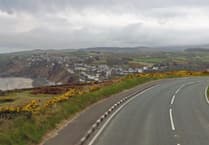With autumn now upon us, it’s time to turn our attention to hedgehogs as they fatten up in preparation for nest building and hibernation.
Gardeners need to be even more mindful of hedgehogs as they trim and tidy, now that the growing season is nearly over.
Here are some tips for happy hedgehog gardening in the autumn:
•Don’t be too tidy, and leave at least one small area of your garden (maybe a corner of your lawn) a bit overgrown so that it’s a home for insects, and therefore a source of food for hedgehogs.
•If you’re raking up leaves, watch out for a sleepy hedgehog and rather than take the leaves to the tip, why not create a leaf pile in a corner of your garden? If you’re lucky, a hedgehog may choose this as a hibernation spot.
•If you have a compost heap, be extra careful when sticking a fork in it to turn it over – you may inadvertently kill or injure a nesting hedgehog.
•Check that any garden drains have undamaged covers and that they haven’t been dislodged by the recent heavy rain.
•If you’re tidying up garden netting from fruit bushes, make sure it’s safely stored in a shed so that a curious hedgehog doesn’t become entangled.
•And if you have a pond, ensure that there’s a ramp (such as a plank of wood) for a trapped hedgehog to use if it falls in the pond, and ensure the ramp isn’t too steep.
On the subject of ramps, the British Hedgehog Preservation Society (BHPS) is recruiting ‘Ramp Rangers’ across the UK and the Isle of Man – people who check their local cattle grids and whether any hedgehogs are trapped.
The data collected so far shows that only 40% of the cattle grids inspected had any form of ramp installed.
Even more disappointing is the fact that some of these ramp-less grids are owned by local authorities and national parks.
And it’s not just hedgehogs that can become trapped in cattle grids – ducklings and goslings are also at risk.
The BHPS is aiming to gather enough data to see whether hedgehogs trapped in cattle grids is a real issue, and whether or not it needs to plan a specific awareness campaign. It needs the following information:
•Location: a grid reference, ‘what3words’, or a good old-fashioned postal address.
•Land use: is it public or private?
•Is there a ramp installed?
•If there is, is it in good condition?
•Are there any hedgehogs, or other species, dead or alive in there?
Please e-mail this information to the ‘contact us’ page of the BHPS’s website: www.britishhedgehogs.org.uk.
If you find a trapped, live hedgehog then do what you can to lift it out of the cattle grid, but don’t put yourself or others at risk.
Once out of the grid and placed on the ground, the hedgehog will probably stay curled up for a while until it feels safe to move.
Observe it for as long as you can, but if you think it is unwell please take it home, place it in a ventilated box, and offer it meaty dog or cat food.
If it’s cold, place a hot water bottle wrapped in a towel on one side of the box, so that there’s room for the hedgehog to move away from the heat if it gets too hot and make sure the bottle stays warm.
If the hedgehog is still unresponsive after a few hours, then please take it to your nearest vet who will give it emergency first aid, free of charge.
If you can’t get to a vet then please bring the hedgehog to us – our reception area is open seven days a week, from 8am to 5pm.





Comments
This article has no comments yet. Be the first to leave a comment.